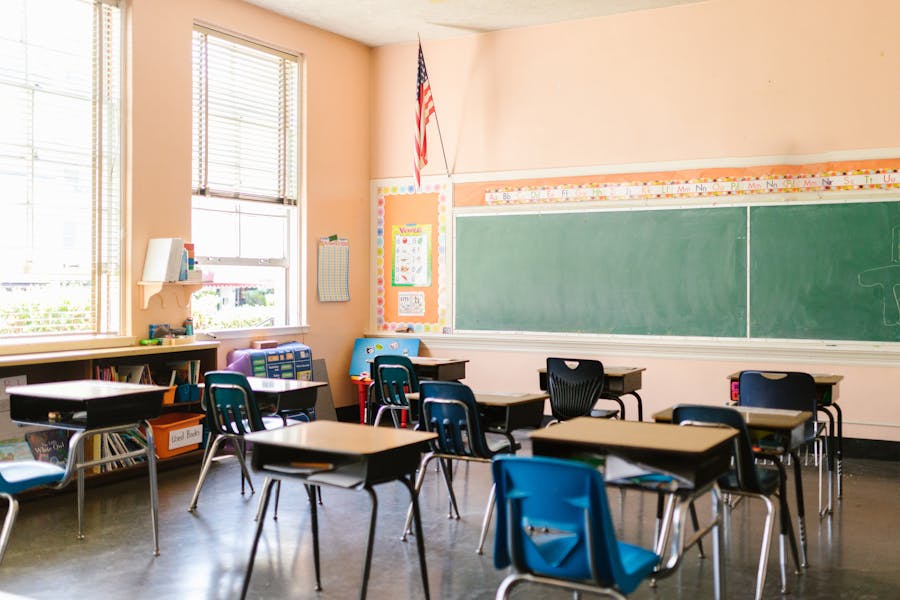How Projectile Resistant Film Enhances School Safety Without Changing the Aesthetic
Let Us Help You Create a Safer Learning Environment

Schools carry a heavy responsibility these days. Beyond education, they're also tasked with creating environments where students and staff feel genuinely safe. That expectation extends to every corner of a campus, including those often-overlooked weak points: windows and glass doors.
Recent headlines and safety assessments have pushed school officials to reevaluate physical security measures. While metal detectors and lockdown drills get most of the attention, subtle upgrades are proving just as crucial. Projectile-resistant films have been increasing in popularity because they are quiet, effective solutions that add time, resilience, and peace of mind without turning schools into fortresses.
Want to know how a nearly invisible film can help protect students and staff in Houston, TX, in a crisis? Let’s dive in to see what makes it so effective.
SEE ALSO: Protecting Our Schools with Projectile Resistant Film
How Does Projectile Resistant Film Work?
While this material isn't designed to stop bullets outright, it dramatically slows down attempts to breach glass by holding shattered pieces together. The film adds strength and elasticity to the glass, absorbing the shock from an impact and preventing immediate shattering. That time buffer can make a critical difference, delaying unwanted entry long enough for staff to respond or emergency services to arrive. It turns a vulnerable surface into a barrier that demands more time, more force, and more effort to break through.
Safety Without the Fortress Feel
Unlike obvious security upgrades like bars or ballistic glass, projectile-resistant film blends into the window, allowing it to protect the room without projecting fear. Installed directly onto existing windows, it's nearly invisible once in place. Students and staff don’t feel like they're in a fortress; they simply feel safe. There’s no need for dramatic architectural changes or additions that signal "something bad might happen here." This helps schools maintain their welcoming, open aesthetic while still taking critical safety measures behind the scenes.
Why They Are a Must-Have For School Campuses
From a logistical standpoint, the benefits are hard to ignore. Full window replacement with security glass is costly and disruptive. It involves construction crews, structural changes, and extended downtime. Projectile-resistant film, on the other hand, installs quickly, often during school breaks, and works with existing infrastructure. Maintenance is minimal, and the film lasts for years without noticeable wear.
Plus, this option offers extra flexibility. If the school has budget restrictions right now, you can protect specific zones without committing to full-scale renovations, making it easier to prioritize high-risk areas without breaking the budget.
One Layer in a Larger Strategy
Glass protection alone isn’t enough to ensure a secure school environment. Projectile-resistant film is most effective when used as part of a layered defense strategy. Pair it with access control systems, security cameras, and lockdown protocols, and you have a well-rounded approach that supports both physical security and peace of mind.
In the event of an attempted breach, the film can delay entry just long enough for first responders to act or for internal lockdown procedures to take effect. That window of delay, sometimes even just seconds, can be crucial to save lives.
Where It Matters Most
Not all windows pose the same level of risk. Strategically placing these solutions is essential to make the most of any safety investment. Start with high-traffic areas: main entrances, administrative offices, and ground-level classrooms facing the exterior. These are common targets in security breaches and deserve added reinforcement. Other smart placements might include nurse stations, libraries, or multipurpose rooms, spaces that often have large windows or host groups of students.
By identifying and securing the most exposed areas, schools can dramatically reduce risk without needing to retrofit the entire building. However, if you’re unsure which areas should be protected, it is always a good idea to call an expert installer to guide you through the process.
Trust the Pros with This Subtle but Strong Solution
While the concept behind projectile-resistant film is simple, proper installation is anything but. The effectiveness of this security layer depends on precision: correct surface prep, edge anchoring, and film thickness must all align with the building’s needs. An expert installer ensures that no corner is cut and no surface is left vulnerable.
Schools exploring this upgrade should work with professionals who understand both the product and the environments it protects. If you’re considering adding projectile-resistant film to your campus, contact ASAP Security at (877) 418-ASAP or fill out our online form for a personalized consultation, and let us create a tailored approach that protects your school in Houston, TX.